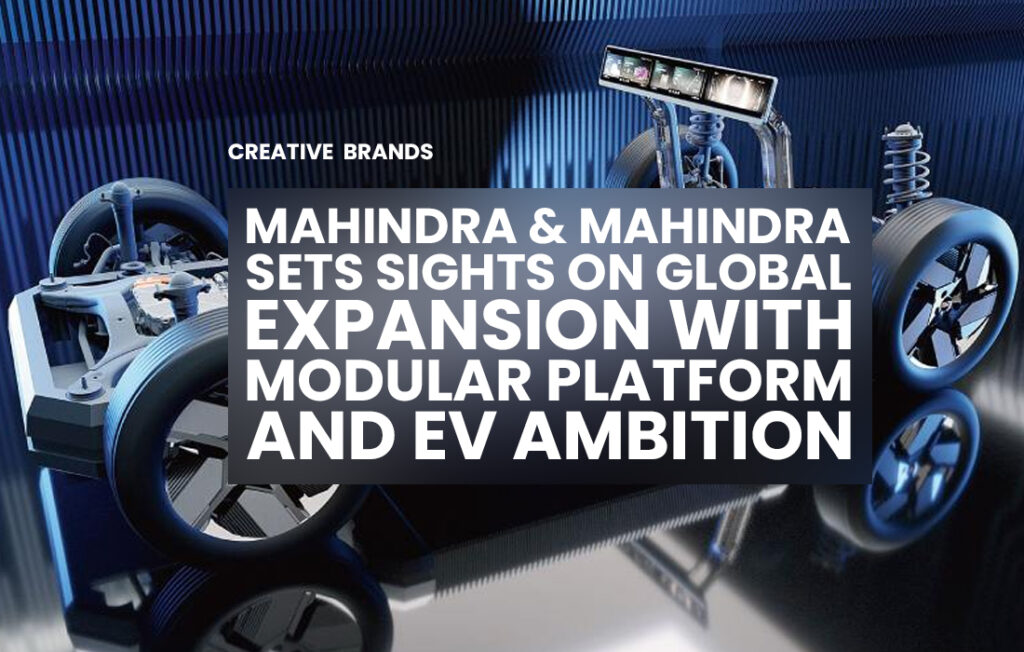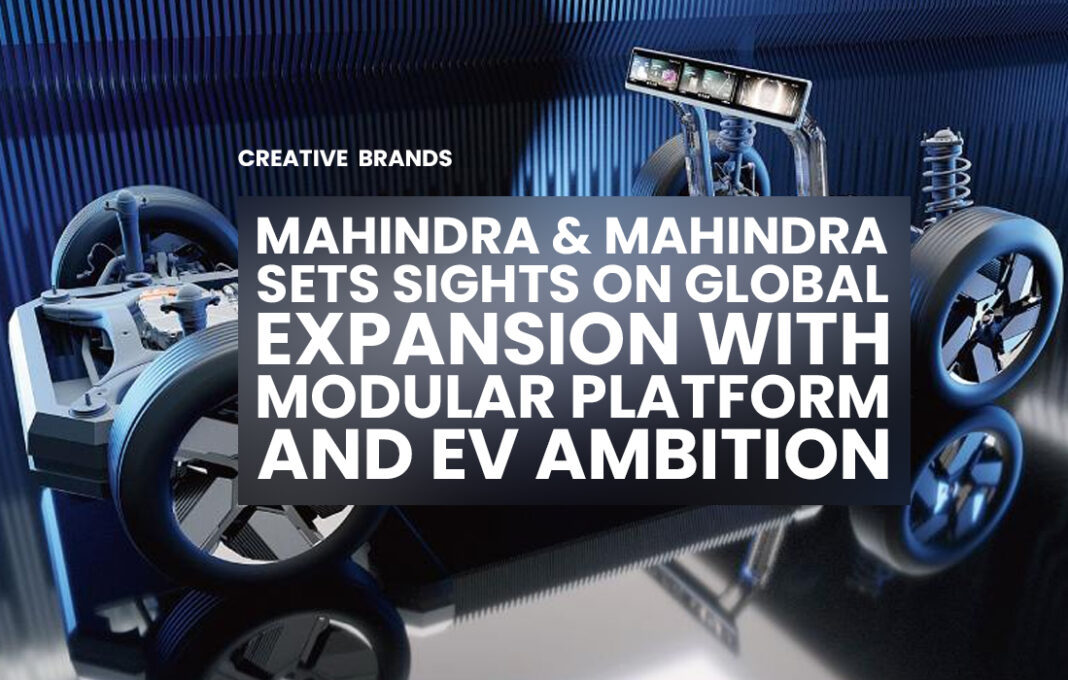Mahindra & Mahindra is accelerating its global strategy, developing the NU_IQ fuel-agnostic platform targeted at sub-4-metre vehicles and embracing design-led, tech-rich electric models. Leveraging India’s agility and cost-competitive ecosystem, the firm aims to build a lasting international presence, citing patience and adaptability amid volatile supply chains and shifting global demand.

As Mahindra & Mahindra begins putting the building blocks in place for a larger global play in the coming years, the company finds itself at a pivotal moment of transformation — one that reaches beyond manufacturing vehicles for the Indian market and into the broader terrain of global mobility, advanced electric vehicles (EVs) and fresh brand narratives. Rajesh Jejurikar, Executive Director and CEO (Auto & Farm Sectors) at Mahindra & Mahindra, is absolutely convinced that India is “uniquely placed” in this moment.
Jejurikar points out that India’s technical and software capabilities are now strong; they’re delivering innovation at globally competitive costs. “We are not making cars for the first time. So we can blend enough knowledge of the past with enough flexibility to adapt to a new way of doing things,” he says. In Mahindra’s view, this gives it an edge: a less steep learning curve, and one that can shift rapidly to meet future demands.
At the core of this global ambition is the company’s forthcoming product architecture, the platform code-named NU_IQ, which is set to be a cornerstone of the automaker’s future. This is not simply another vehicle platform; it is designed to be fuel-agnostic — capable of handling diesel, gasoline and electric powertrains — thereby giving Mahindra the flexibility to operate across markets and power-train transitions. ETAuto.com The NU_IQ platform is explicitly targeted at the sub-4 metre segment, a vehicle category where Mahindra sees a significant opportunity to grow — both domestically and internationally. In markets like South Africa, where Mahindra has had a presence for decades, success has been seen with newer products, brand recall and service infrastructure. But for many other countries Mahindra acknowledges that the international expansion is not a six-month switch-on process: “you’re able to put products through that, you start seeing success. Now that is going to take time to build in other countries where we do not have a presence.”
From a brand standpoint, Mahindra is undergoing a shift. Where it formerly leaned on its identity of rugged, tough vehicles built for Indian terrain, it now wants to pursue what Jejurikar describes as “on-road presence and head-turning design” rather than utilitarian ruggedness. At a brand evolution juncture around 2020, the company decided to calibrate its identity: authentic adventure-ready vehicles, yes, but with sophistication, safety and design flavour embedded. “Eventually, it is the product and the design that build a brand,” he states.
This transformation is not only cosmetic. With its recent electric vehicle forays, Mahindra has seen a brand uplift: “The foray into EVs certainly elevated the overall brand perception because customers did not expect Mahindra to bring in such high levels of technology and design that could look really competitive on a global scale.” ETAuto.com Indeed, over 80 per cent of buyers of its EVs were previously non-Mahindra owners, including buyers from luxury car segments. That, Jejurikar suggests, is evidence of brand repositioning in action.
Mahindra’s strategy is consciously oriented toward long-term investment and patience. The company knows that going global does not mean simply opening exports or shipping left-hand-drive vehicles abroad. It means building brand presence, distribution channels, dealer service networks, parts supply chains and customer ecosystems in markets where it may have little standing today. “International is not a one-day switch-on switch,” Jejurikar emphasises. “We have to have the patience to do it in a calibrated manner.”
The timing is therefore significant. India’s automobile ecosystem is evolving, not just in the manufacture of vehicles, but in software, connectivity, electrification, and the convergence of mobility and technology. Mahindra wants to leverage that evolution. The company already sees a strong base in its domestic market, which it can refine and then leverage for global export. As Jejurikar notes: “While China has made some great moves, we think so has India. We will see a lot coming out of India for the world, irrespective of whether it is an Indian or a non-Indian company. But the ecosystem is going to produce a lot for the world.”
In practical terms, Mahindra is preparing to expand into segments where it had less presence before. For example, its stronger area until now has been in the 4.4–4.7-metre crossover/SUV segment. With NU_IQ, it intends to move into sub-4-metre space, which has recently become even more attractive thanks to policy shifts — GST on sub-4-metre vehicles has been reduced to 18 per cent from 28 per cent. That regulatory tailwind adds momentum.
But ambition alone isn’t sufficient. Mahindra acknowledges the many headwinds facing the automotive industry: chip shortage during COVID-19, rare earths crises, commodity inflation, and global supply-chain disruptions. “We cannot wish away volatility, but the key is to work in such a way that we can convert every such event into an opportunity rather than get overwhelmed,” says Jejurikar. That mindset of resilience gives insight into how the company intends to execute its strategy under unpredictable global conditions.
If Mahindra succeeds in this larger global push, its growth will not solely be measured in vehicles sold abroad. It will be measured in brand metrics, in consumer perception, in digital capabilities, software-defined features, design language, and in a stronger platform architecture as a foundation for modular, adaptable products. Its journey will require shifts in culture, in international logistics and in consumer behaviour across geographies.
At home in India, the lessons gathered during the transformation will increasingly inform global strategy. The domestic market, with its mix of price sensitivity, value consciousness and technology upgrades, is a laboratory of sorts. Mahindra is harnessing that to refine its EV roadmap, software features, design language and consumer interactions — all of which may be exported globally, either directly or through partnerships. The interplay of India’s strengths — scale, fast learning curve, software talent — and Mahindra’s ambition creates an interesting formula.
The company’s positioning of “adventure-ready vehicles” that are also design-led and technology-rich is aligned with global consumer tastes in changing markets. As more markets embrace electrification and more consumers prioritise design and presence over purely utilitarian functionality, Mahindra may find that its evolved identity aligns well with this global wave. Its challenge will be to orchestrate the execution: building the right vehicle at the right cost, with the right channels, and with the right brand resonance. It will require patience, sustained investment and a willingness to iterate.
In a world of shifting automotive paradigms — where electric, connected, autonomous and shared mobility scenarios are rapidly emerging — Mahindra’s repositioning suggests it is not content to remain a domestic player. It seeks to transform into a global contender, leveraging India as both a manufacturing hub and an innovation lab. For stakeholders watching Indian automakers, this pivot is among the most telling. The question is not whether Mahindra can enter global markets; it is whether it can succeed in them and build a lasting presence.
Jejurikar and his team are aware that the next few years will involve critical execution milestones. The journey to 2027 and beyond, where NU_IQ turns into real products and begins contributing globally, will test strategy, operations and market response. But the belief is firm: the combination of design, technology, brand purpose and India’s evolving ecosystem places Mahindra in a competitive spot. The vehicles may carry the Mahindra badge, but the play could become far broader — about exporting ideas, architectures and capabilities that reflect the new face of Indian manufacturing. As Mahindra gears up for this global expansion, it’s not just the road ahead for its vehicles that matters, but the road ahead for Mahindra the brand.







